
Cerastes is a genus of small, venomous vipers found in the deserts and semi-deserts of northern North Africa eastward through Arabia and Iran. Three species are currently recognized by ITIS, and an additional recently described species is recognized by the Reptile Database. Common names for members the genus include horned vipers, North African desert vipers, and cerastes vipers.

Vipera is a genus of vipers. It has a very wide range, being found from North Africa to just within the Arctic Circle and from Great Britain to Pacific Asia. The Latin name vīpera is possibly derived from the Latin words vivus and pario, meaning "alive" and "bear" or "bring forth"; likely a reference to the fact that most vipers bear live young. Currently, 21 species are recognized. Like all other vipers, the members of this genus are venomous.

Vipera berus bosniensis, the Balkan cross adder or Bosnian viper, is a venomous subspecies of viper endemic to the Balkan Peninsula.
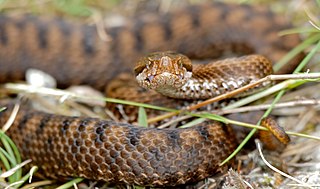
Vipera aspis is a viper species found in southwestern Europe. Its common names include asp, asp viper, European asp, and aspic viper, among others. Like all other vipers, it is venomous. Bites from this species can be more severe than from the European adder, V. berus; not only can they be very painful, but approximately 4% of all untreated bites are fatal. The specific epithet, aspis, is a Greek word that means "viper." Five subspecies are currently recognized, including the nominate subspecies described here.

Cerastes vipera, common names Sahara sand viper and Avicenna viper, is a viper species endemic to the deserts of North Africa and the Sinai Peninsula. No subspecies are currently recognized. Like all other vipers, it is venomous.
Macrovipera lebetinus transmediterranea is a viper subspecies endemic to North Africa. Like all other vipers, it is venomous.
Vipera ammodytes montandoni is a venomous viper subspecies endemic to Bulgaria and southern Romania.
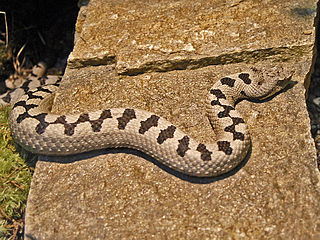
Vipera transcaucasiana is a venomous viper species endemic to parts of Georgia and northern Turkish Anatolia.

Vipera aspis atra is a venomous viper subspecies endemic to France, Switzerland and Italy.
Vipera aspis hugyi is a venomous viper subspecies endemic to southern Italy.
Vipera aspis zinnikeri is a venomous viper subspecies endemic to the Pyrenees region of Spain and France.
Vipera berus sachalinensis is a viper subspecies endemic to Asia. Like all other vipers, it is venomous.
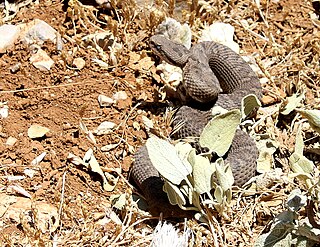
The Lebanon viper, also known as Bornmueller's viper, is a species of venomous snake in the subfamily Viperinae of the family Viperidae. The species is native to Western Asia. There are no recognized subspecies.

The Mount Bulgar viper, also called the Bulgardagh viper is a viper species endemic to the mountains of southern Turkey. Like all other vipers, it is venomous. No subspecies are currently recognized.
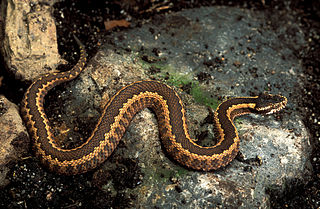
Vipera dinniki is a viper species native to the Caucasus Mountains region, part of Russia, Georgia, and Azerbaijan. Like all other vipers, it is venomous. No subspecies are currently recognized.
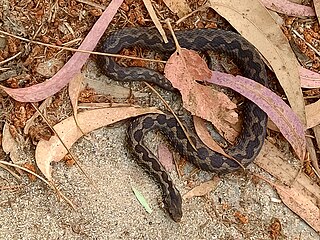
Vipera latastei gaditana is a viper subspecies endemic to southern Spain and Portugal, as well as North Africa. Like all other vipers, it is venomous.

Vipera lotievi, commonly known as the Caucasian meadow viper, is a species of venomous snake in the family Viperidae. The species is endemic to Azerbaijan, Georgia, and Russia. There are no subspecies that are recognized as being valid.
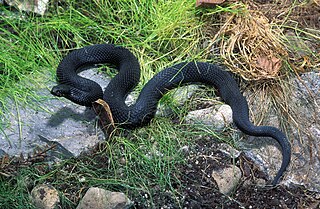
Vipera nikolskii is a venomous viper species endemic to Ukraine, eastern Romania, and southwestern Russia. No subspecies are currently recognized.
Vipera seoanei cantabrica is a venomous viper subspecies endemic to the Cantabrian Mountains in Spain.

Vipera ursinii is a species of venomous snake in the subfamily Viperinae of the family Viperidae. It is a very rare species, which is in danger of extinction. This species is commonly called the meadow viper. It is found in France, Italy, and Greece as well as much of eastern Europe. Several subspecies are recognized. Beyond the highly threatened European population, poorly known populations exist as far to the east as Kazakhstan and northwestern China.
















